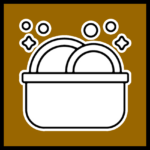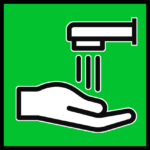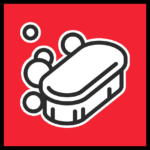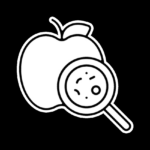The Safety Series
Safety in Culinary Arts
The CAIBOK Safety Series in culinary arts is a critical foundation for any kitchen environment. It emphasizes the importance of proper food handling, sanitation, and personal hygiene to prevent accidents and foodborne illnesses. Safety is not just about following procedures; it’s about ensuring the well-being of both kitchen staff and customers. Earning badges in this pillar demonstrates a chef’s proficiency in these essential practices. At advanced levels, it also includes the implementation of safety management systems such as HACCP and ISO 22000, highlighting a chef’s ability to maintain rigorous safety standards.
 Food and Safety 1100 – White Belt – food safety badge
Food and Safety 1100 – White Belt – food safety badge
The Food and Safety 1100 badge provides an introductory understanding of essential food safety practices.
 Food Safety 2100 – Brown Belt – Commis
Food Safety 2100 – Brown Belt – Commis
Understanding the importance of maintaining a safe kitchen environment. This includes identifying potential hazards and implementing safety protocols to prevent accidents and injuries.
 Food Safety 3100 – Green Belt – Chef de Partie
Food Safety 3100 – Green Belt – Chef de Partie
Candidates advancing to this level deepen their knowledge and application of advanced food safety, focusing on specific stations or sections.
 Food Safety 4100 – Red Belt – Sous Chef
Food Safety 4100 – Red Belt – Sous Chef
Sous Chefs oversee and train junior kitchen staff in food safety practices and are responsible for managing critical food safety operations.
 Food Safety 5100 – Black Belt – Chef de Cuisine
Food Safety 5100 – Black Belt – Chef de Cuisine
Chef de Cuisine is responsible for obtaining and maintaining local food safety certifications and ensuring compliance with all local health department requirements.
 Food Safety 6100 – Gold Belt – Executive Chef
Food Safety 6100 – Gold Belt – Executive Chef
Executive Chefs develop and implement food safety protocols across all locations, ensuring enterprise-wide standards are met.
